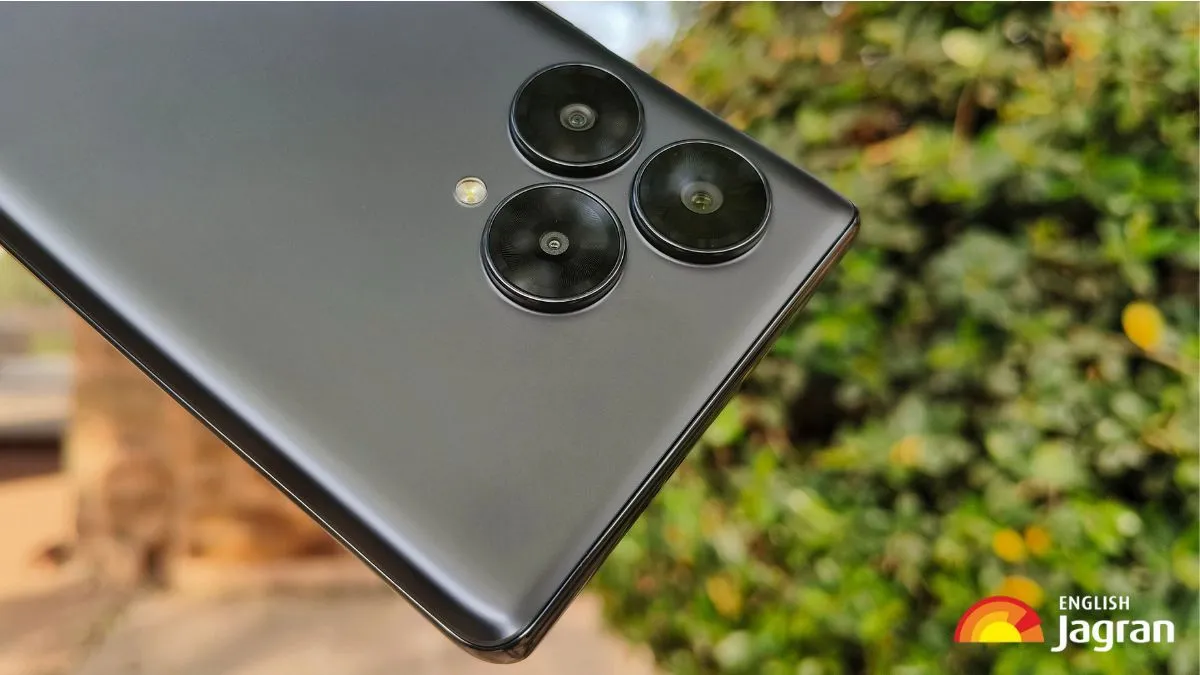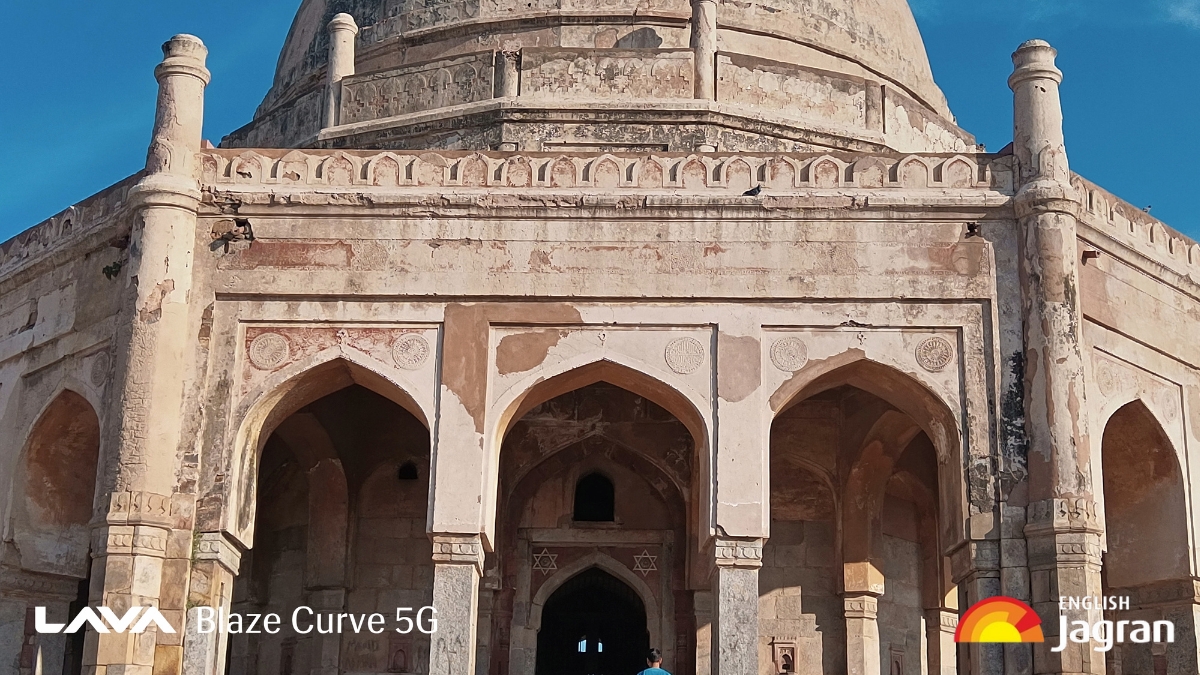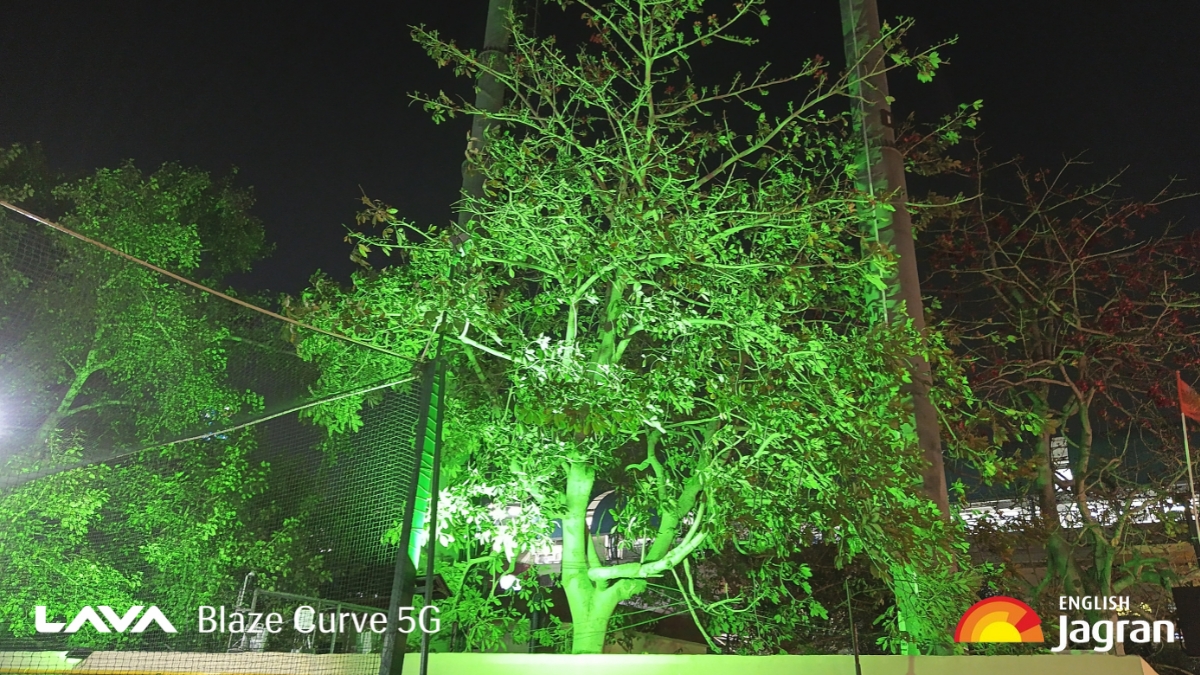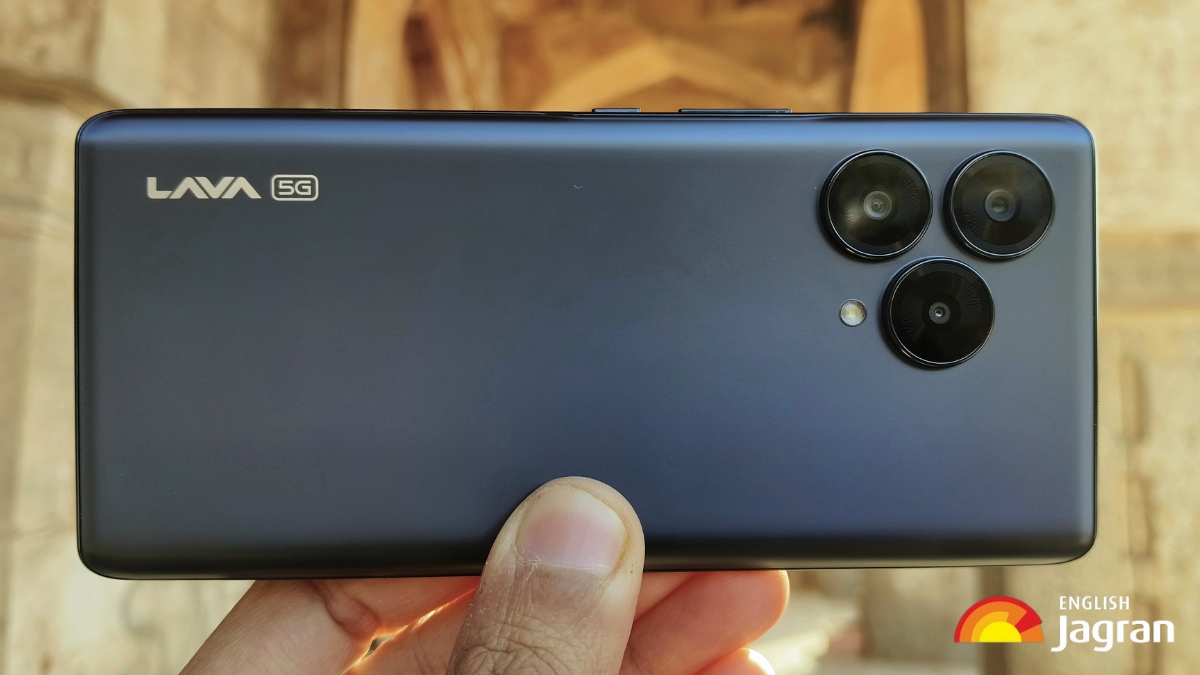- By Vikas Yadav
- Wed, 20 Mar 2024 10:22 PM (IST)
- Source:JND
Lava Blaze Curve Review: Arguably the most competitive price slots during the days of the revolutionary Redmi Note 10 Pro, the sub-Rs 18,000 market is again facing the heat with the arrival of the latest refresh from Lava. The homegrown brand launched the Blaze Curve 5G in India on March 5. It sits in the mid-range price bracket and offers a rich spec sheet to flaunt its worth.
To begin with, the new Blaze has a stunning curved screen with a vivid colour profile to saturate a viewer's eye with boosted red, blue and green tints. Plus, it sports a time-tested mid-range chip, fresh air of pure Android and a long-lasting battery. But how do these 'pros' weigh against its biggest con - the cameras? Read on to find out in my full review.
Also Read: Lava AGNI 2 5G Review: Not Just Looks, AGNI 2 Packs Potent Performance And Software
Design:
The Glass Iron trim (also available in Glass Viridian) gets a matte finish on the back (with Gorilla Glass protection), which does not attract fingerprints easily. The protruding camera array (which reminds me of the POCO F5) does boost some wobble on flat surfaces. With a thickness of 8.8mm and 189g weight, the device is comfortable to settle in hands. But use the provided case for added grip on the slim frame. In all, the smartphone looks great and feels premium from all angles.
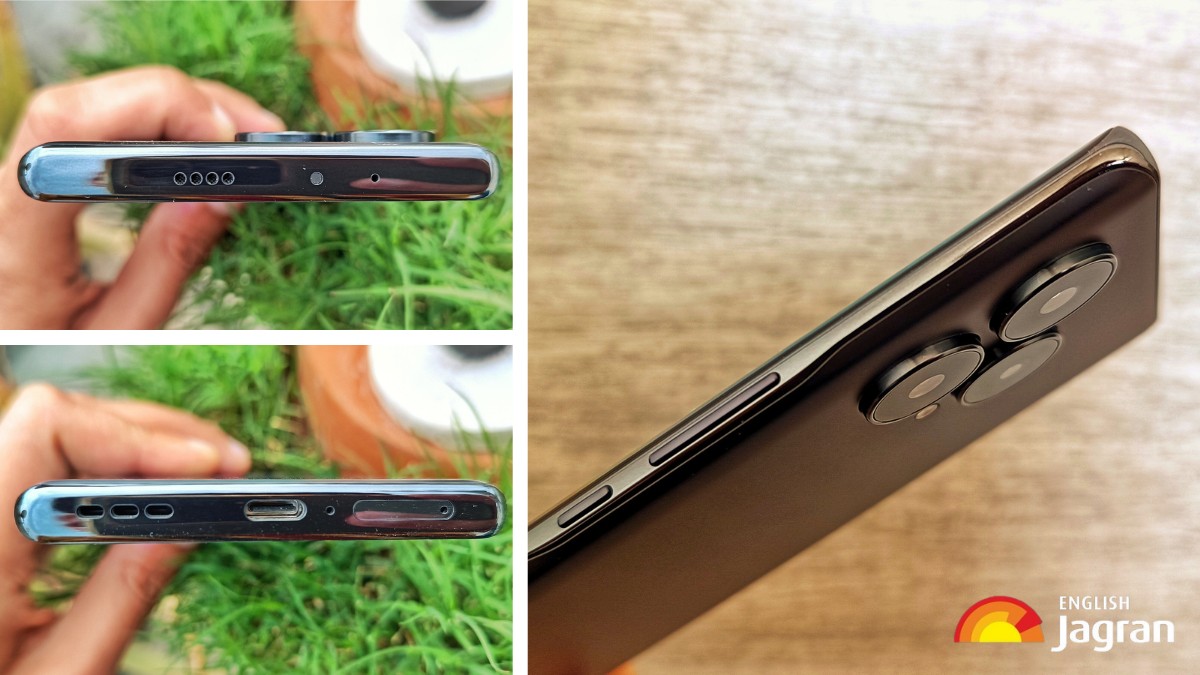 Lava Blaze Curve side frame (Image:Vikas Yadav/JE)
Lava Blaze Curve side frame (Image:Vikas Yadav/JE)
Among other notable design utilities, the frame houses stereo speakers and a USB-C port. While I missed the earphone jack, the good part is that Lava sends a dongle (3.5mm to Type-C) in the box. As for suggestions, the brand can use a matte finish to avoid scratches (and smudges) from appearing on the plastic sides in full glory. Despite this, I believe the offering has a sophisticated aura.
Display:
Flipping to the front, the Blaze Curve gets a jazzy 6.67-inch FHD+ AMOLED 120Hz screen with 800nits peak brightness. The curved screen looks gorgeous with those slim borders. The brightness is adequate to read texts with 'Light' mode in harsh sunlight. It is tuned to emit vivid colours even in 'Normal' mode. However, while playing 4K videos, it does not process HDR and tends to drop frames. Hence, FHD is your best bet.
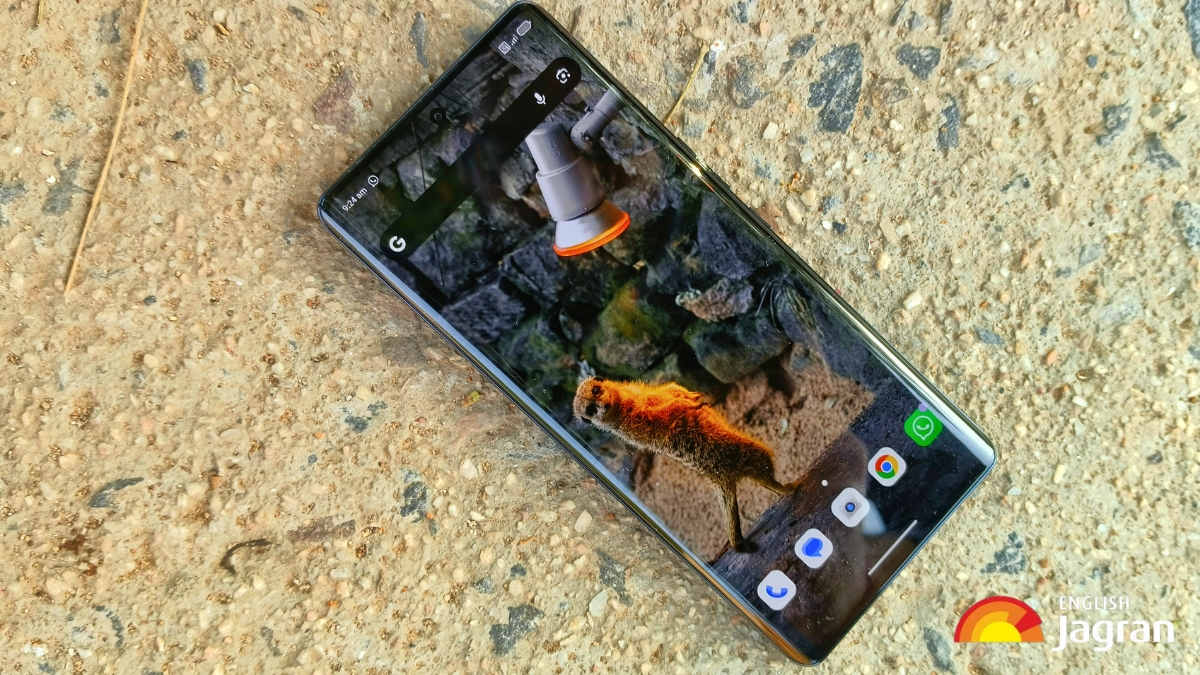 Lava Blaze Curve 5G display (Image:Vikas Yadav/JE)
Lava Blaze Curve 5G display (Image:Vikas Yadav/JE)
Plus, the display shows banding in bright sky and deep colours. However, it is not a deal breaker as such. Details and text on the screen are razor-sharp. Also, the front does not have a single scratch even without using it for weeks without a screen guard. The multimedia viewing experience on the phone is nice owing to supplementary Dolby Atmos-powered dual speakers. Plus, the on-screen fingerprint sensor is fast and accurate. Despite some minor imperfections in the screen, I believe Lava has done an impressive job.
Performance:
The Blaze Curve gets a MediaTek Dimensity 7050 chipset with up to 2.6GHz clock speed. It offers 8GB LPDDR5 RAM and up to 256GB UFS 3.1 storage. In daily operations, the phone performs smoothly without any hiccups. From social media to calling to downloading apps, the performance is decent for the price. However, it periodically chops the refresh rate in Chrome and apps like X (formerly Twitter).
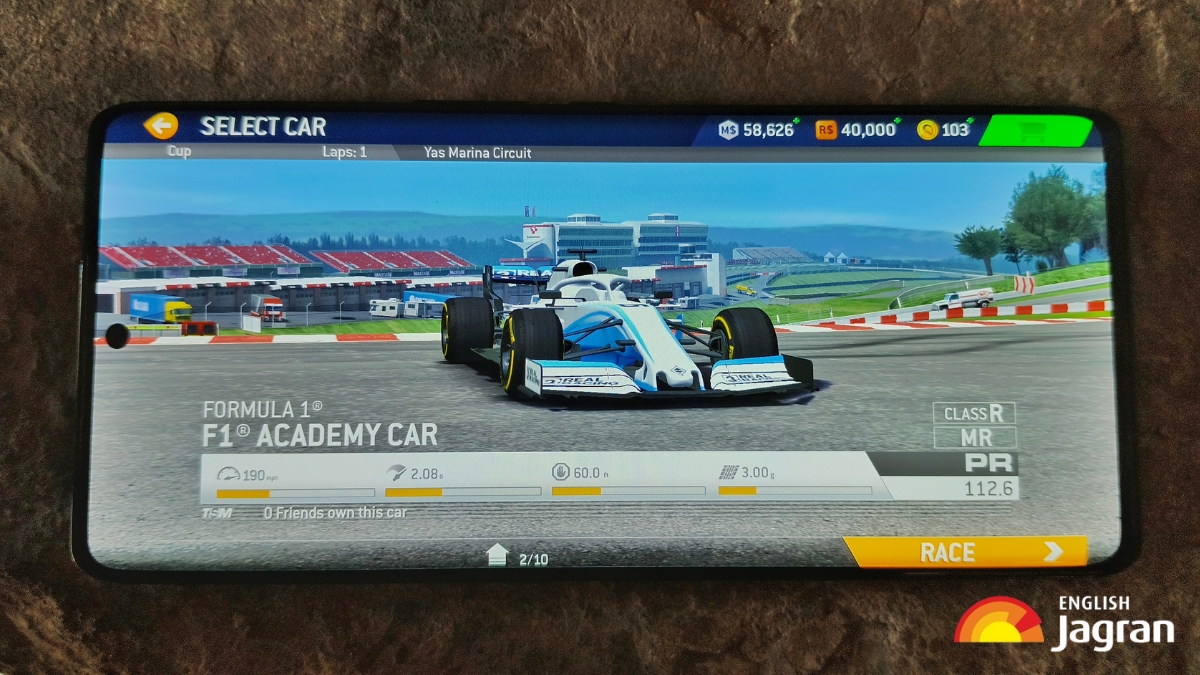 The phone offers good gaming performance in medium settings. (Image:Vikas Yadav/JE)
The phone offers good gaming performance in medium settings. (Image:Vikas Yadav/JE)
Gaming is another point where the phone packs the potential to take on the competition. You can expect a good gaming experience with medium settings. While I expected better graphics in NFS No Limits, the experience was largely smooth across Asphalt 9 and Real Racing 3. The phone does get warm when stressed, like prolonged hotspot usage or taking calls while charging. But these are not a major concern as such.
For precise coordinates at the CPU's potential, here is the AnTuTu score, read/write speeds and results of the stress test:
 Lava Blaze Curve performance test results. (Image:Jagran English)
Lava Blaze Curve performance test results. (Image:Jagran English)
Software:
The smartphone ships with a clean Android 13 experience which is tough to match. No bloatware or spammy notifications, just pure Android feels like a paradise for what you pay. Extra features like Background Stream, App Lock and Edge Lighting are worthy software nuggets. It also gets a native dialer as an alternative to Google's Phone app. However, the UI needs refinement to deliver an exceptional experience.
The overall experience of the Camera app needs improvement. Like the Agni 2, the Blaze Curve also struggles to eliminate palm touches within the camera app (if you use the phone without the case). Moreover, the phone occasionally stutters while watching YouTube or switching apps at high Celsius. Thirdly, the auto-brightness calibration is skimpy, and the haptics implementation across the UI is average.
 Lava Blaze Curve ships with a clean Android experience. (Image:Vikas Yadav/JE)
Lava Blaze Curve ships with a clean Android experience. (Image:Vikas Yadav/JE)
Further, I noticed a peculiar bug when I locked the phone while playing the racing titles mentioned above. After locking the phone during the gameplay and pressing the power button (again) to unlock the phone, the fingerprint icon went missing. As a result, I had to unlock the phone with the password. Moreover, while Lava has promised two OS updates, Android 14 out of the box would have been better.
Battery:
The Blaze Curve gets a massive 5,000mAh battery that supports 33W charging (adapter + USB Type-C-to-C cable in the box). If you top-up the device to 100, it can easily sail through a day with 5G and moderate usage. The backup may vary if you play games. With casual use, such as social media scrolling, video consumption on YouTube, cellular calls and more (mobile data active throughout), it can deliver a screen-on time of slightly under six hours.
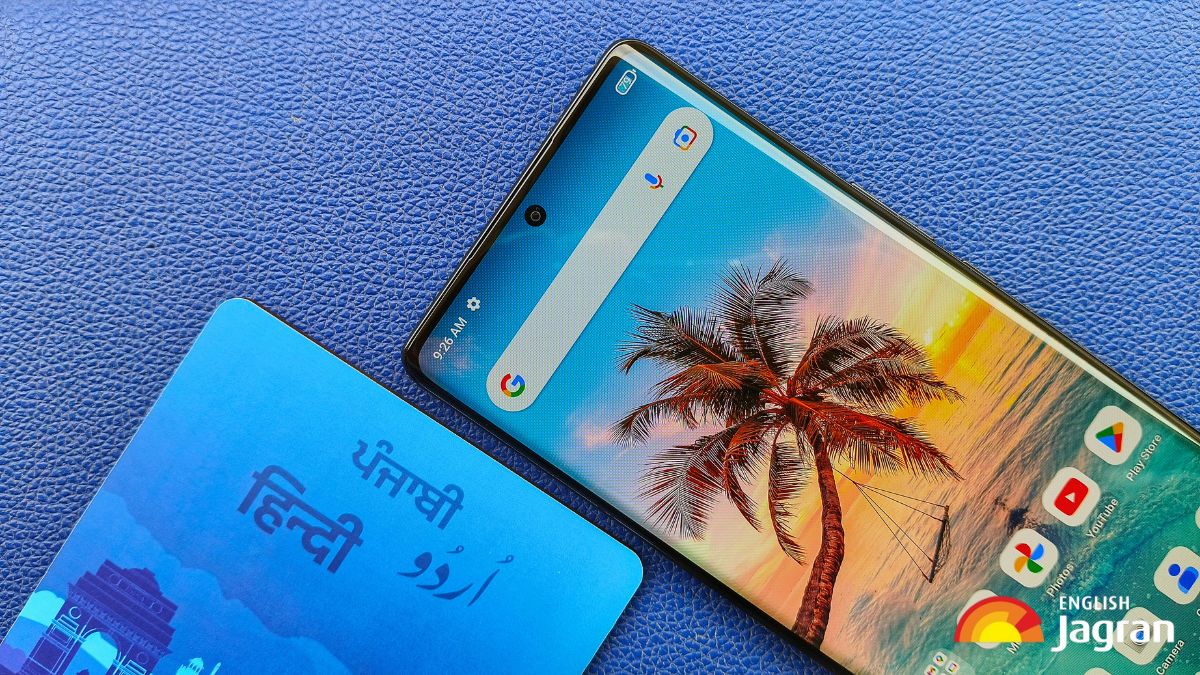 The battery performance of the Blaze Curve 5G is a major pro of the device. (Image:Vikas Yadav/JE)
The battery performance of the Blaze Curve 5G is a major pro of the device. (Image:Vikas Yadav/JE)
It takes slightly over 90 minutes to charge from 0 to 100 per cent. The charging gets significantly slower after 90 per cent. The 'Adaptive Charging' feature that limits the charging to 85 per cent for better battery health in the long run was an impressive touch inside the battery settings. In all, you can count the battery life among the pros of the handset.
Cameras:
Saying this up front, the cameras on the Blaze Curve can be a deal breaker if you plan to buy a camera-centric phone. For quick background, the phone gets a 64MP primary, 8MP ultrawide and 2MP macro lens on the rear and a 32MP selfie shooter. The cameras perform below average and capture inaccurate colours even with HDR and AI off. Details in the wide angle are missing even in daylight scenarios.
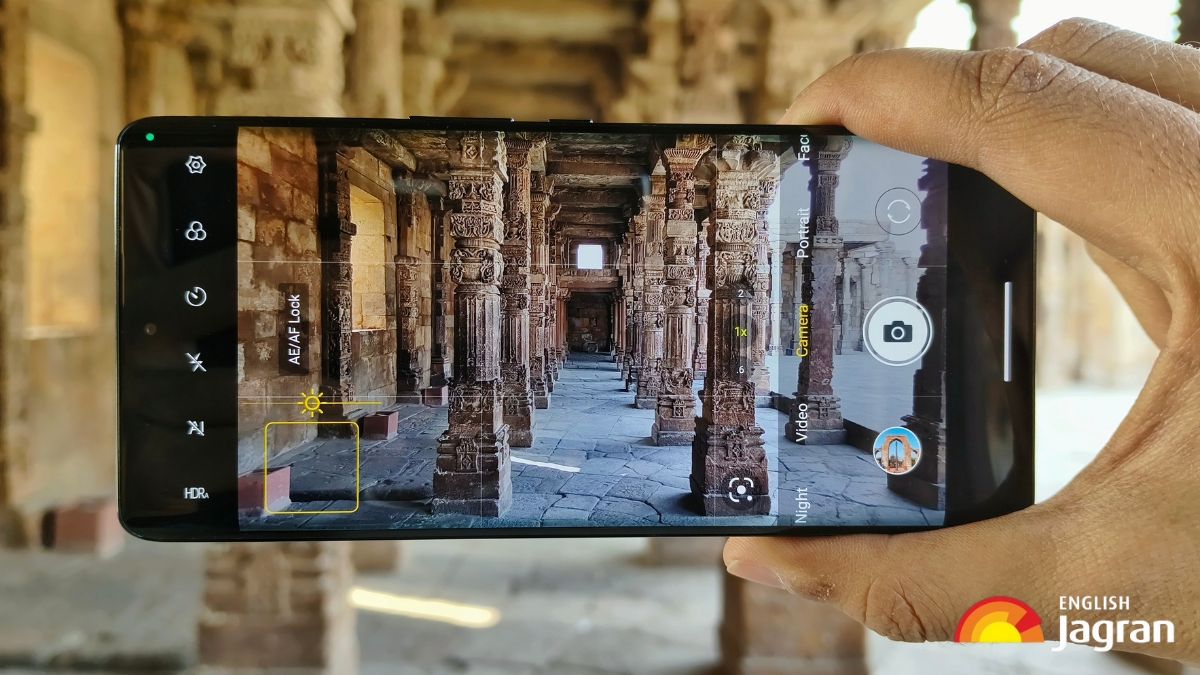 Lava Blaze Curve Camera UI (Image:Vikas Yadav/JE)
Lava Blaze Curve Camera UI (Image:Vikas Yadav/JE)
The primary lens scales the sharpness to unrealistic levels. Plus, it overexposes scenes, which I had to manually modify within the camera app (a frustrating process without the case). Results in low light are also average. As for the macros, the output is what you would expect from a low MP sensor. However, the front camera outputs decent-looking photos in daylight, which you can bank on. As for videos, 4K 30 FPS video output is acceptable for the price.
Here are a few camera samples from the phone arranged in two categories: output from different lenses in different lighting conditions (Grid 1) and 1X shots from the primary camera (Grid 2).

